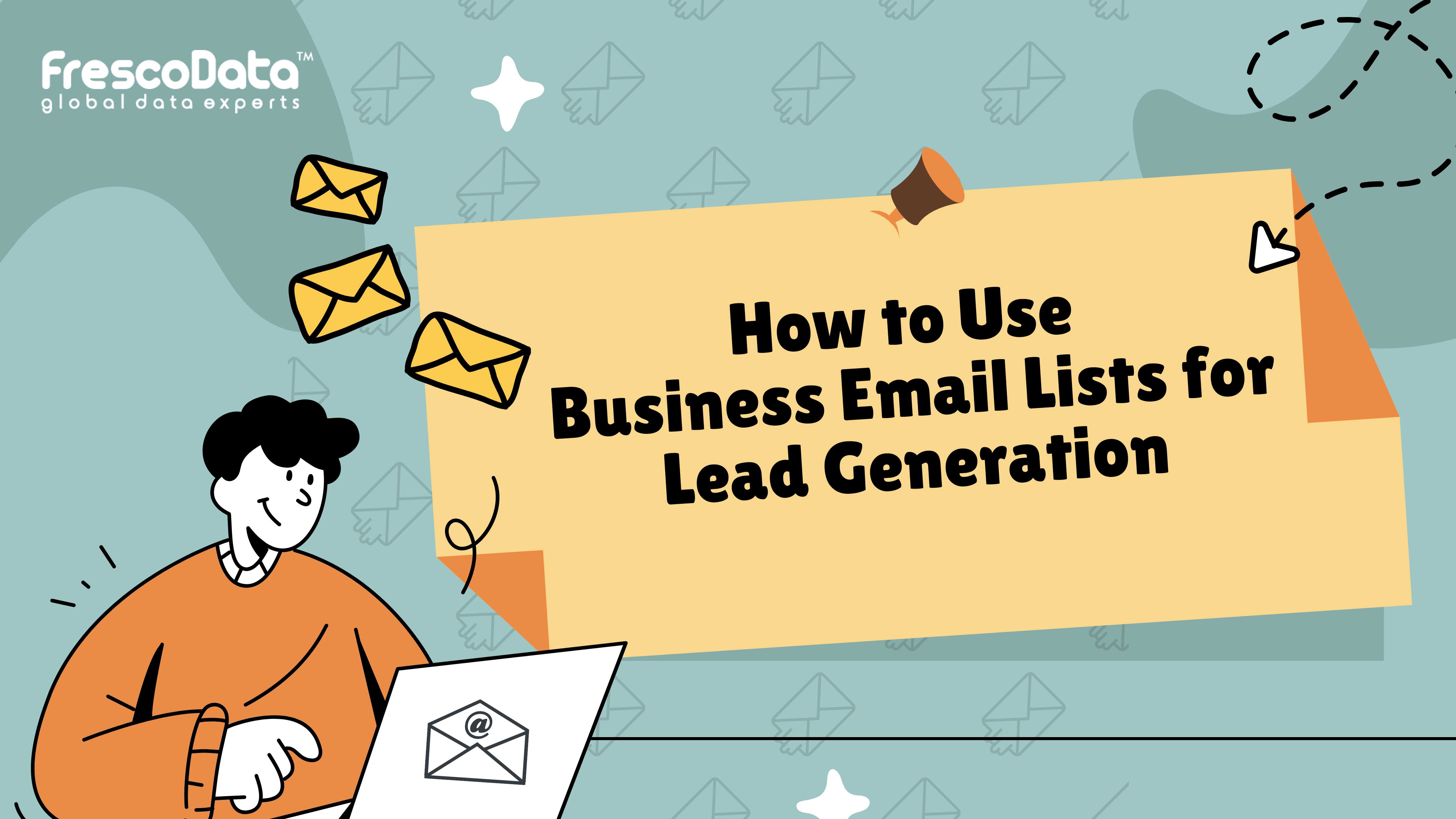In the competitive market, every company wants to grow their business. For business growth, lead generation plays a more massive role, and to make it possible, it requires good business email list data to reach decision makers directly. It's all about quality, relevance, and timing, which matter the most for effective marketing strategies. If you really want to create more business opportunities, then you need to buy the business email lists from a reliable business email list provider that help to make fruitful strategies for your marketing campaign today. However, success depends on how those lists are used.
We’ve seen businesses get stuck sending emails to anyone and everyone, hoping something sticks. That approach rarely works. The real results come from building and using lists that are not only accurate but highly targeted. When a message reaches the right person with the right need at the right time, the conversation starts, and that’s when leads begin to flow.
Let’s take a closer look at how to use business email lists effectively to generate more qualified leads for your business.
Start by Defining the Right Audience
Lead generation always begins with clarity. If a business doesn’t know exactly who they wants to target, even the best messaging will fall flat. Identifying the right customer involves more than choosing an industry.
It means narrowing down by:
- Company size
- Job role or title
- Buying behavior
- Pain points
- Location
- Budget range
For example, a software firm targeting logistics companies should know if they want to reach operations managers, IT directors, or purchasing teams. Each role has different priorities, so the message has to match.
In comparison to broad outreach, focused messaging sent to a well-defined group produces higher engagement and better-qualified leads. According to Campaign Monitor, segmented campaigns generate 760% more revenue than non-segmented ones. That stat alone shows the value of starting with the right data.
Choose a Reliable Business Email Lists Provider
Once the ideal audience is defined, the next step is getting the data. That’s where many go wrong. Buying a generic list from an unknown source can cause more harm than good. High bounce rates, unverified emails, and irrelevant contacts can damage your domain’s reputation and waste your team’s time.
Working with a trustworthy data provider ensures the data is clean, up-to-date, and targeted. A reputable business email list provider give you control over segmentation filters—industry, role, region, company size, etc.—so the list reflects your ideal customer profile.
For instance, if you’re looking to run campaigns in North America, ask for contacts pulled specifically from USA-based business email lists. Likewise, if you’re selling HR software, make sure you’re reaching HR decision-makers, not general company contacts.
Segment and Personalize Before Sending
Having the right list is one thing—using it wisely is another. Sending one generic message to every contact is the fastest way to get ignored. Instead, divide your list into meaningful segments and tailor each message to that group.
You might create separate campaigns for:
- HR directors
- Sales managers
- Small business owners
-
Enterprise-level decision-makers
Each group has different priorities. Segmenting your targeted business email lists allows you to speak directly to those needs. When someone feels like an email was written just for them, they’re more likely to respond.
One SaaS company we worked with created two separate email flows from the same list: one for small startups and one for mid-size companies. The first focused on cost-efficiency, and the second on scalability. As a result, open rates improved by 35%, and lead volume doubled within six weeks.
Use a Targeted Email List for Lead Generation, Not Just Promotion
The goal of cold email is to start a conversation, not to sell in the first sentence. That’s where many campaigns fail. They pitch too early before building trust.
A targeted email list for lead generation should be treated as a warm-up tool. Start by offering something helpful or relevant to the recipient’s role or industry. That could be a free resource, a short case study, or even a quick question that starts a back-and-forth.
Instead of saying,
“Buy our product,” try:
“We’re helping other logistics teams cut delivery delays by 30%. Would it make sense to share how?”
This type of messaging doesn’t feel like an ad. It feels like a solution, and that opens doors.
Ensure Deliverability and Reputation Management
Even the best-crafted message won’t do much if it lands in a spam folder. That’s why businesses must take deliverability seriously. When using email for lead generation, your sending practices must align with platform rules and best practices.
Here’s how to protect your email reputation:
- Verify all emails before sending
- Warm up new email domains slowly
- Use SPF, DKIM, and DMARC authentication
- Avoid spam-trigger words
- Include an unsubscribe link
- Keep bounce and spam complaint rates low
If you buy business email lists, always ask how recently the data was verified and how it’s maintained. A reputable targeted email list provider should be able to share bounce rates, update frequency, and compliance policies.
Follow Up Without Spamming
Most leads won’t respond to the first email, and that’s completely normal. People get busy. They forget. The second or third follow-up is often where the real results happen.
According to Brevet, 80% of sales require at least five follow-ups, but nearly half of salespeople give up after one.
Here’s what a follow-up should look like:
- Send a polite reminder 3–4 days after the initial message
- Include new value (e.g., an article, case study, or stat)
-
Ask if the timing is better now or if you should check back later
Well-timed follow-ups show persistence without being pushy—and they’re often the difference between silence and a scheduled call.
Track Results and Refine Your Approach
No campaign is perfect on the first try. The key to long-term success is measuring performance and improving based on what works.
Pay close attention to:
- Open rates (subject line effectiveness)
- Click-through and reply rates (content relevance)
- Bounce rate (list quality)
- Spam complaints (message tone and targeting)
Use these insights to improve segmentation, messaging, and overall list hygiene. Over time, your results will compound, and your targeted email lists will become more valuable with each send.
Conclusion
Using business email lists for lead generation isn’t about blasting thousands of contacts with one message. It’s about focus, relevance, and timing. When you define your ideal customer, work with a reliable provider, segment your audience, and send emails that address each person’s specific needs, the results follow naturally.
Whether you choose to build your list over time or buy business email lists from a trusted vendor, success depends on how well you use that data. Treat every contact like a real person—not a number—and you’ll turn email into one of your most consistent lead sources.








